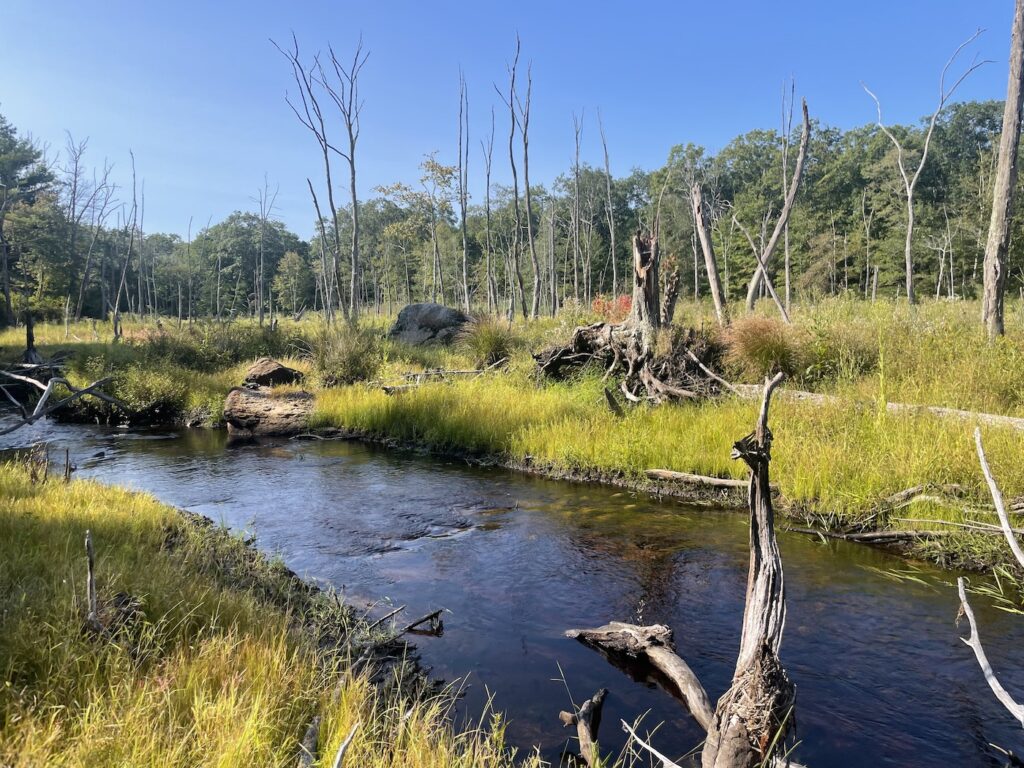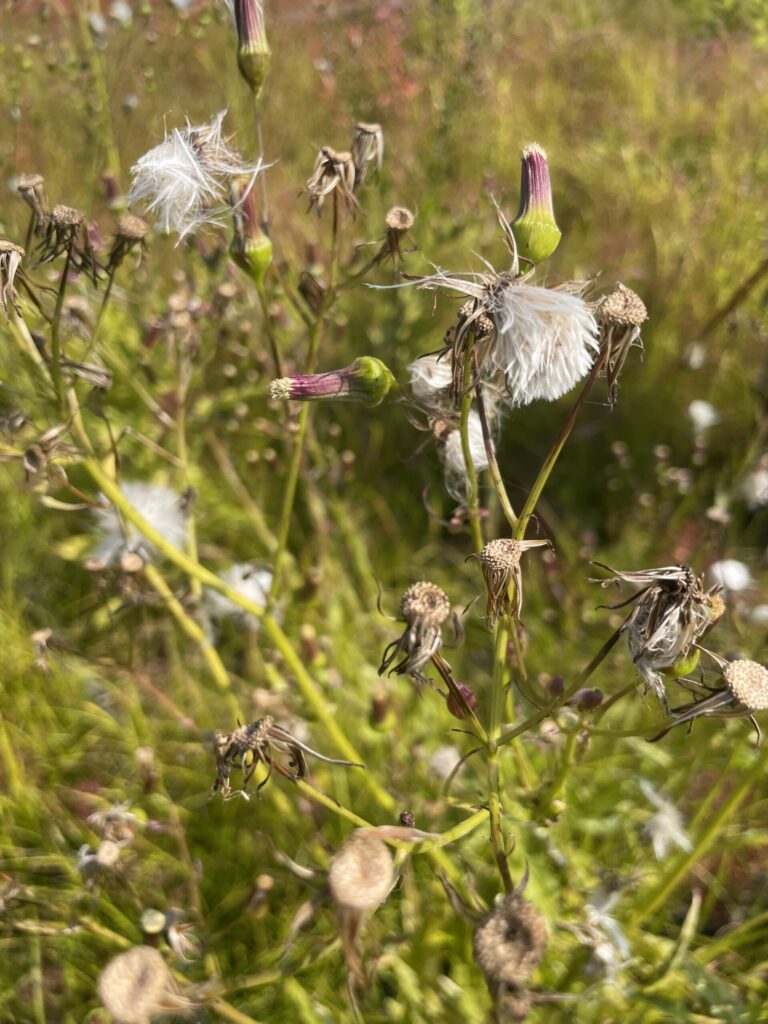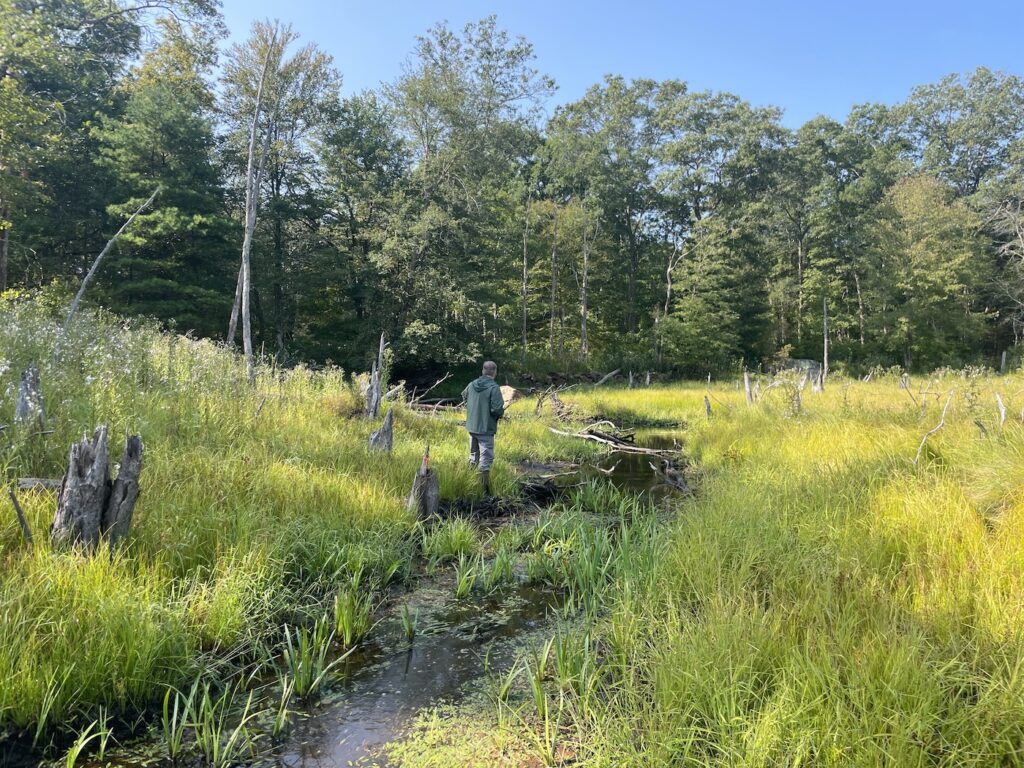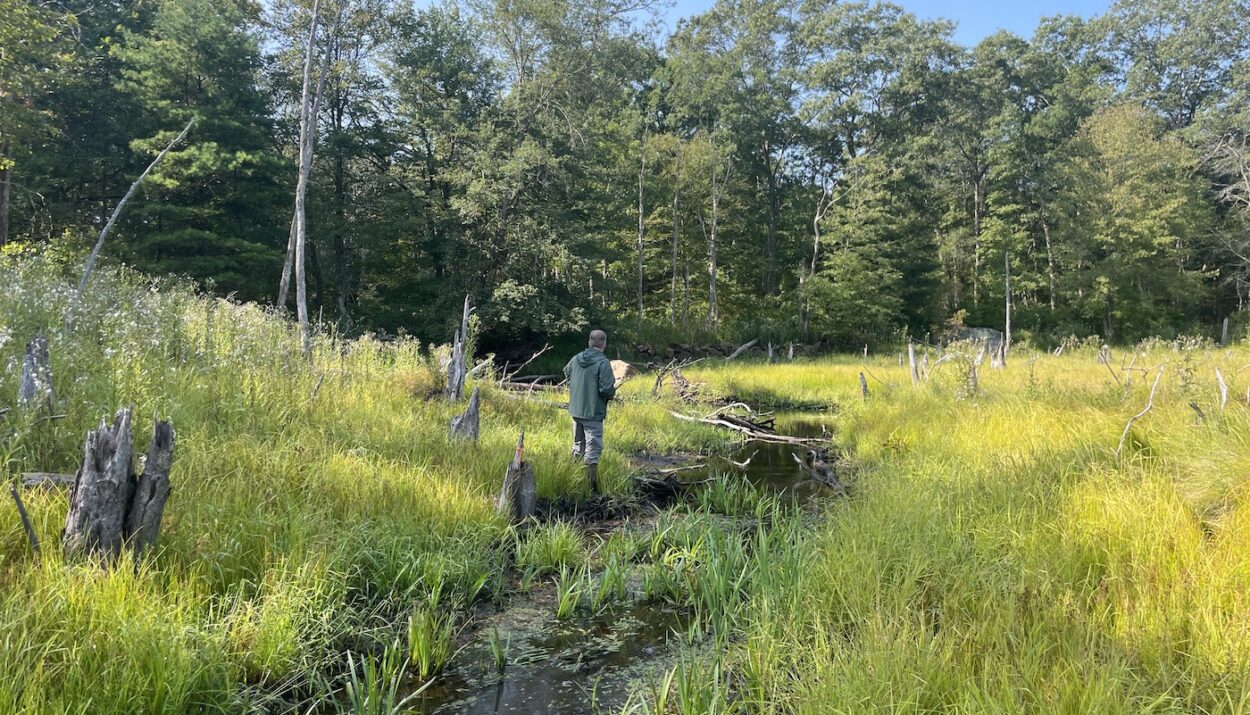Those studying how ecology has changed in Beaver River Preserve after dam failure say transformation has been a wonderful surprise
Originally published by ecoRI News, a nonprofit newsroom covering environmental news in Rhode Island. Read more at ecoRI.org
RICHMOND — Wind tousled the long green grasses growing alongside the Beaver River, throwing up bits of American burnweed, a plant with a cotton-like flower that usually grows in the aftermath of wildfires.
Less than a year ago the area looked blackened and barren, though not from any fire; a dam failure had drained an estimated 2 million gallons of water from the impounded pond, uncovering mud, dead trees, and the occasional glacial erratic.
But nine months later, the land is covered in native plants, buzzing with bees, and cut by a cold-water river.

Those studying how the ecology has changed in the Beaver River Preserve after the dam failure told ecoRI News the transformation has been a wonderful surprise.
“The complement of biodiversity that has emerged out of the mud in one growing season, that, for me, is the wow factor,” said Tim Mooney, director for marketing and communications for The Nature Conservancy in Rhode Island, which owns the preserve.
TNC is working with the Rhode Island Natural History Survey (RINHS), the Rhode Island Department of Environmental Management, and the University of Rhode Island to track how the plant and animal life in and around the river has changed in the new conditions.
They are currently cataloging plants that sprouted from the pond’s seemingly barren floors, and, so far, they’ve recorded more than a hundred species, ranging from sedges and rushes to blueberries and birches.
Doug McGrady, an amateur botanist and longtime TNC member, is in charge of the list. On a recent walk through the area with ecoRI News, he clipped samples of grasses and pointed out which plants might look the same but are actually completely different species.
The small, beggar, and three-lobed beggarticks — all in the genus Bidens — have yellow flowers of different configurations and all have been growing in the meadow since the dam failure, according to McGrady.
He’s been coming to the preserve frequently, tracking the changes in the field. Recently, McGrady’s been watching a type of starwort he believes might be new to the state, though he has to wait for it to flower before he can identify it and double-check with another botanist.
He said he’s been amazed at the variety found in the meadow — from the rice cut grass that grabs onto skin and clothes growing on the edge of the river to the pinkish smartweed growing in slightly higher, drier parts of the meadow only a few feet away.
“This is very new, who knows what will pop up,” McGrady said.
David Gregg, executive director of RINHS, said the failure of the dam, which was a stone structure likely dating back to the 1800s and fortified by beavers, helped the area rejoin the natural cycle.
“We think a natural state is just nothing ever changes,” Gregg said. “But in those kinds of river systems like that, change, it happens all the time.”
It could start with beavers making a dam and creating a pond, he said, killing trees and vegetation in the resultant flooding. The dams become abandoned when the beavers run out of food or are eaten by predators. Then, big storms or time wipe out the dams. Trees and vegetation come back in the meadows the drain recreates.

During the ponded part of the cycle, the water isn’t moving fast and sits in the sun, where it warms up above temperatures found in a river.
“They have different fish, different frogs, different insects versus cold-water streams,” Gregg said.
The problem with the human-made structures — and others like them that can be found all around Rhode Island’s rural areas — is that they were made to be more permanent, creating impounded ponds that last longer and get hotter than they would in the natural cycle, Gregg explained.
Now that the dam is gone, he said the river is in a “a big block of habitat that’s relatively pristine,” with beavers, natural vegetation, and predators, it has all the elements to enter back into this cycle.
“You have to have the whole cycle, or it doesn’t really work,” Gregg said.
The return to a cold-water environment, paired with the open door the dam failure created, made the upper part of the river accessible to fish, said John O’Brien, TNC policy and partnership specialist.
Brook trout are already coming into this part of the river when usually it would have been too hot for them. The trout are an indicator species that show biologists that the river is staying at a low enough temperature to be considered a cold-water environment.
DEM has installed sensors to measure how the temperature of the water is changing over time and is taking samples of fish to see which species are in the river, according to O’Brien.
A group from URI will also study the aquatic insects in the river’s sediment. O’Brien got in the river to do his own check, finding mostly young caddisflies, though he’s interested to see what else comes through as the river develops and the seasons change.
Mooney said TNC will continue sharing information about the research.
“We’re interested in the biodiversity and changes in biodiversity on our preserve, in and of itself,” he said. “But bigger picture, it’s an illustration of how systems are actually better off after a dam is removed. It’s an opportunity.”







